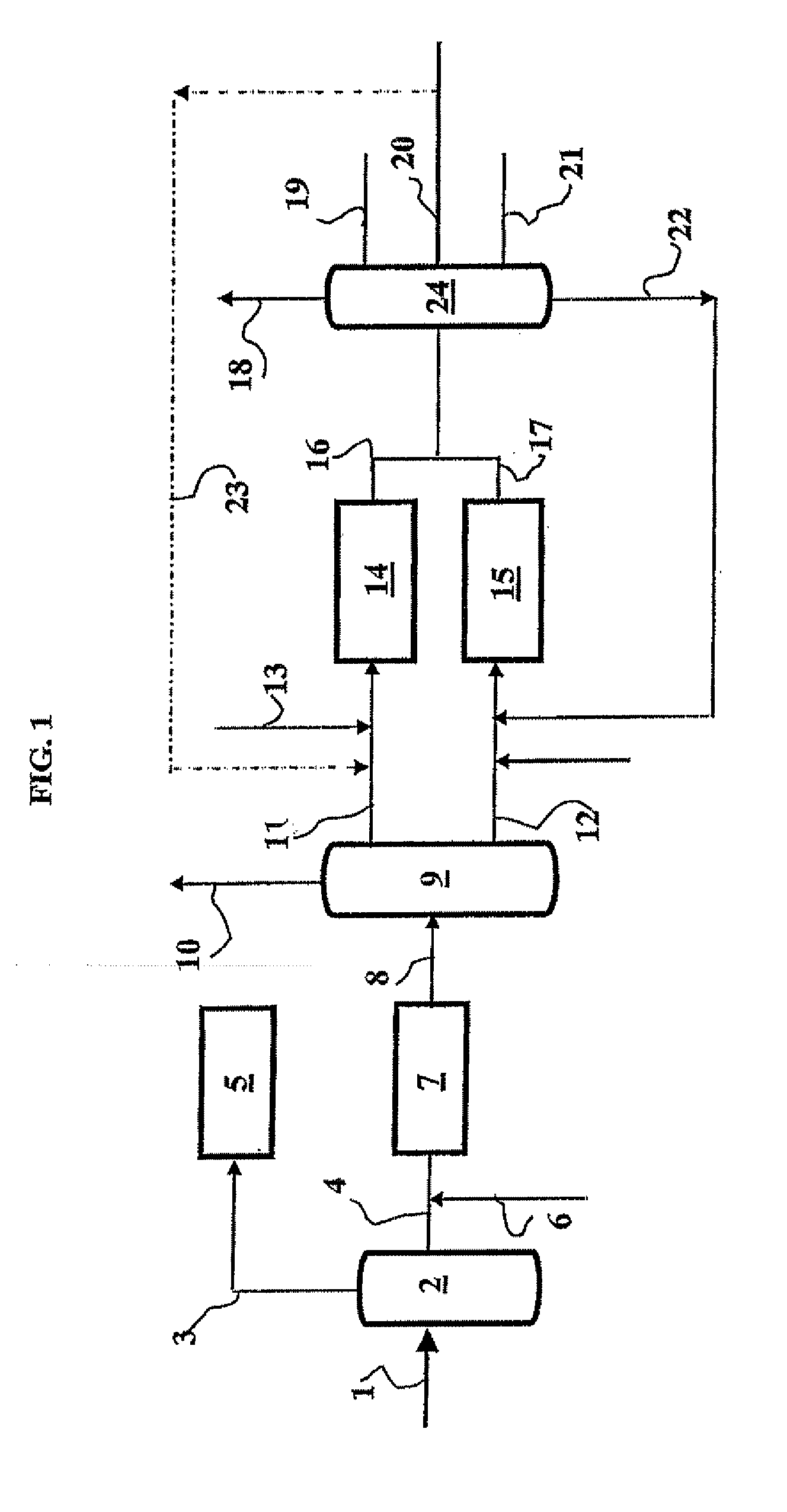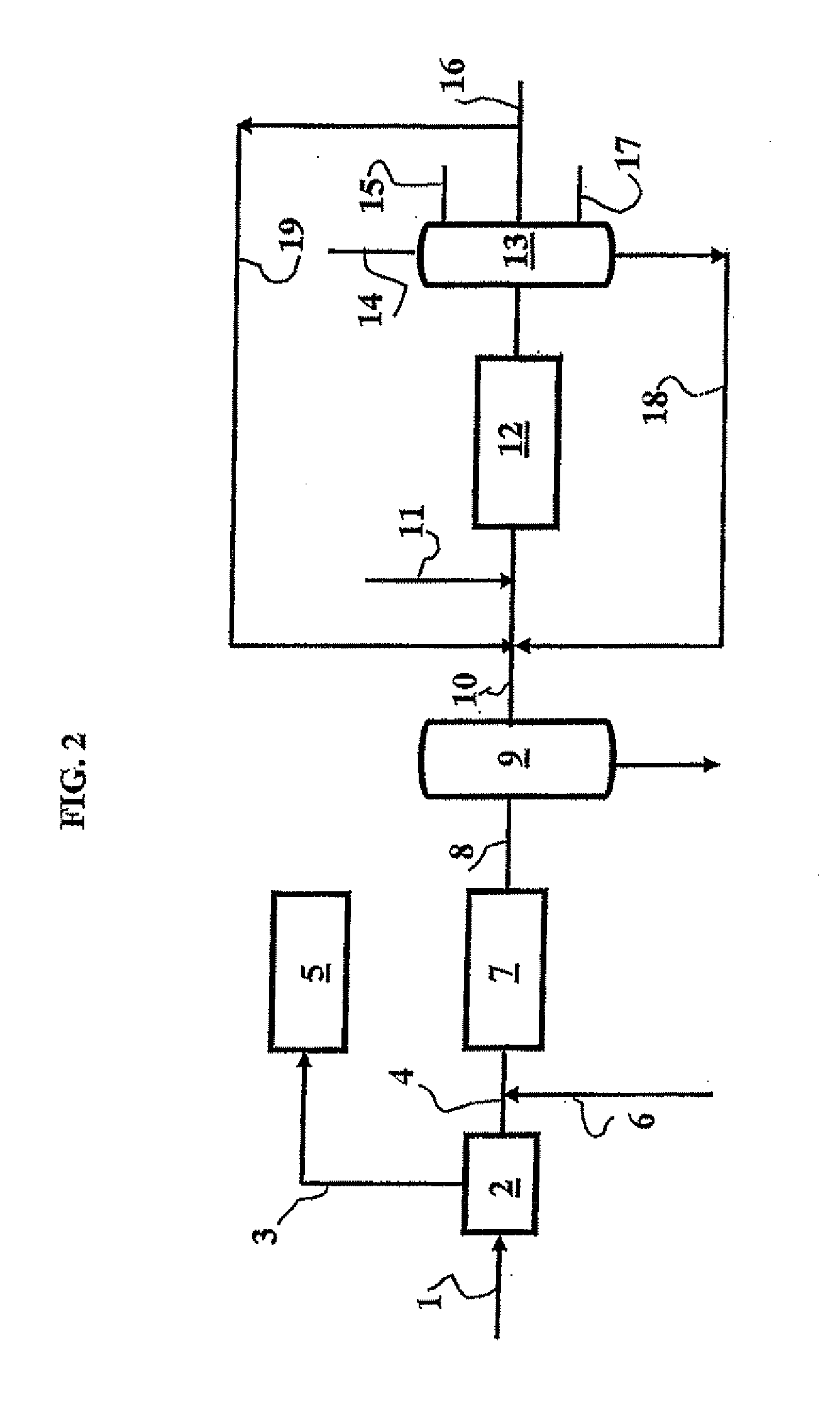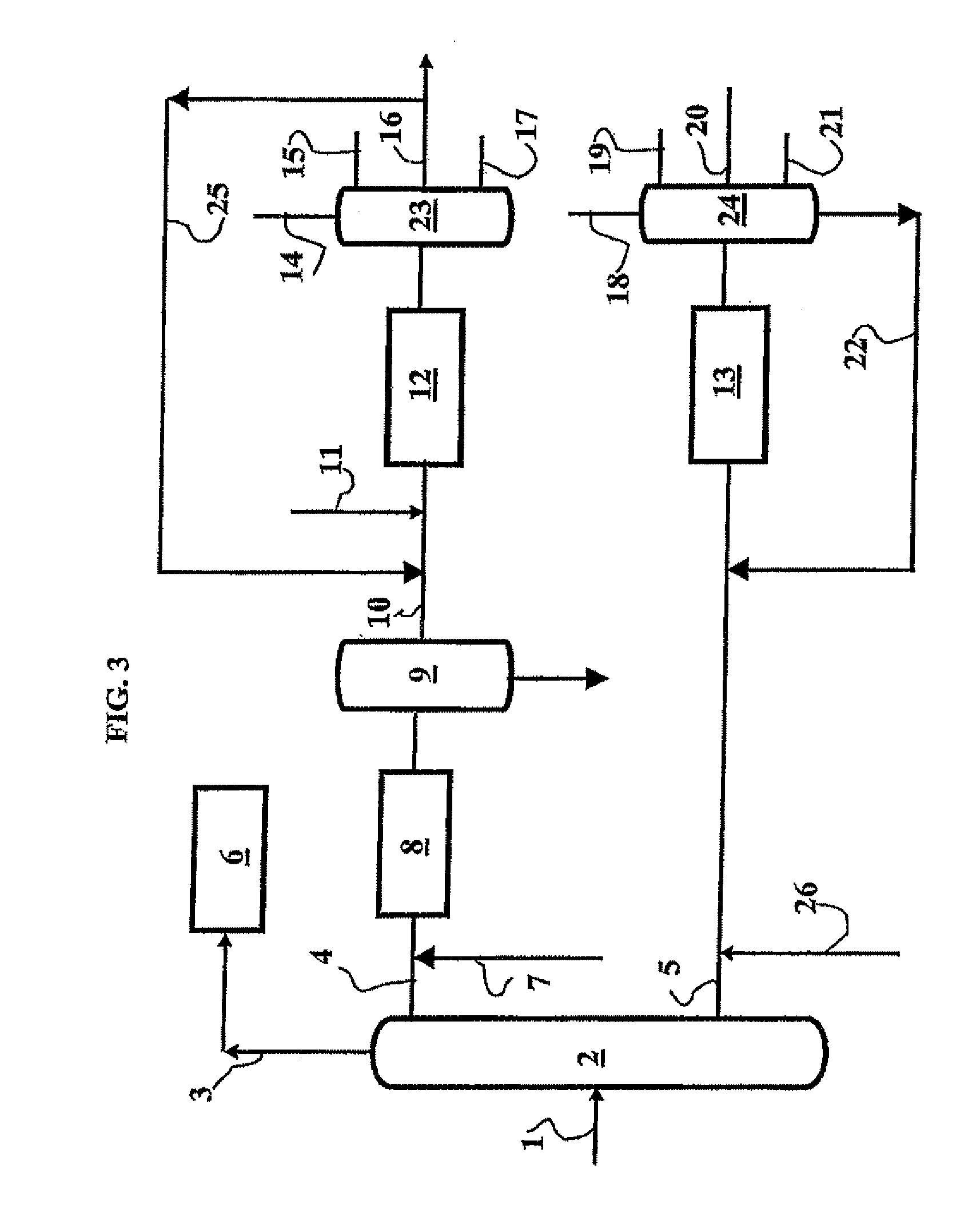Process for producing middle distillates by hydrocracking of feedstocks obtained by the fischer-tropsch process in the presence of a catalyst comprising an IZM-2 solid
a technology of izm-2 solids and hydrocracking process, which is applied in the field of fischertropsch, can solve the problems of low activity of silica-alumina-based catalytic systems, inability to use products consisting mainly of normal paraffins, and inability to achieve high-activity catalysts
- Summary
- Abstract
- Description
- Claims
- Application Information
AI Technical Summary
Benefits of technology
Problems solved by technology
Method used
Image
Examples
first embodiment
a) First Embodiment
[0092]According to a preferred embodiment of the invention, the process includes the following steps starting from a feedstock obtained by Fischer-Tropsch synthesis:
a) separating a single fraction, known as the heavy fraction, having an initial boiling point of between 120-200° C.,
b) hydrotreating at least a portion of said heavy fraction,
c) fractionation into at least 3 fractions:[0093]at least one intermediate fraction having an initial boiling point T1 of between 120 and 200° C., and a final boiling point T2 of higher than 300° C. and lower than 410° C.,[0094]at least one light fraction boiling below the intermediate fraction,[0095]at least one heavy fraction boiling above the intermediate fraction;
d) passing at least a portion of said intermediate fraction over a hydroisomerising catalyst,
e) passing at least a portion of said heavy fraction in the process according to the invention,
f) distilling the hydrocracked / hydroisomerized fractions to obtain middle disti...
second embodiment
b) Second Embodiment
[0139]Another embodiment of the invention includes the following steps:
a) separating at least one light fraction of the feedstock so as to obtain a single fraction, known as the heavy fraction, having an initial boiling point of between 120-200° C.,
b) optionally hydrotreating said heavy fraction, optionally followed by a step
c) for removing at least a portion of the water and optionally CO, CO2, NH3, H2S,
d) passing in the process according to the invention at least a portion of said optionally hydrotreated fraction, the conversion on the catalyst according to the invention described hereinbefore of the products having boiling points of higher than or equal to 370° C. into products having boiling points of lower than 370° C. is greater than 40% by weight,
e) distilling the hydrocracked / hydroisomerized fraction to obtain middle distillates, and recycling in step d) the residual fraction boiling above said middle distillates.
[0140]This embodiment will be described wi...
third embodiment
c) Third Embodiment
[0153]Another embodiment of the invention includes the following steps:
a) fractionating (step a) the feedstock into at least three fractions:[0154]at least one intermediate fraction having an initial boiling point T1 of between 120 and 200° C., and a final boiling point T2 of higher than 300° C. and lower than 410° C.,[0155]at least one light fraction boiling below the intermediate fraction,[0156]at least one heavy fraction boiling above the intermediate fraction;
b) hydrotreating (step b) at least a portion of said intermediate fraction, then passing (step d) in a treatment process at least a portion of the hydrotreated fraction over a hydroisomerising catalyst
c) eliminating at least a portion of the water produced during the hydrotreatment reactions and optionally CO, CO2, NH3, H2S,
d) passing (step d) in the process according to the invention at least a portion of said heavy fraction with a conversion of the 370° C.+ products into 370° C.− products of greater tha...
PUM
| Property | Measurement | Unit |
|---|---|---|
| Temperature | aaaaa | aaaaa |
| Temperature | aaaaa | aaaaa |
| Temperature | aaaaa | aaaaa |
Abstract
Description
Claims
Application Information
 Login to View More
Login to View More - R&D
- Intellectual Property
- Life Sciences
- Materials
- Tech Scout
- Unparalleled Data Quality
- Higher Quality Content
- 60% Fewer Hallucinations
Browse by: Latest US Patents, China's latest patents, Technical Efficacy Thesaurus, Application Domain, Technology Topic, Popular Technical Reports.
© 2025 PatSnap. All rights reserved.Legal|Privacy policy|Modern Slavery Act Transparency Statement|Sitemap|About US| Contact US: help@patsnap.com



